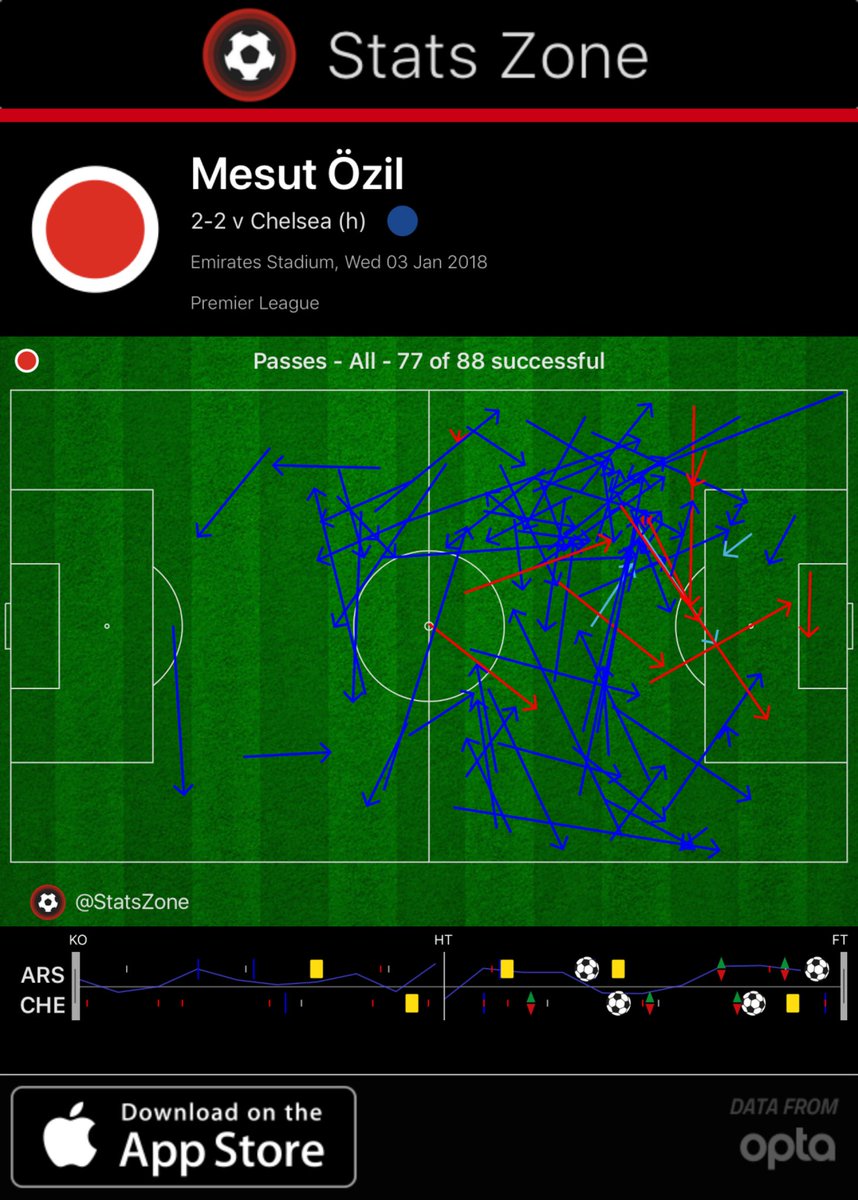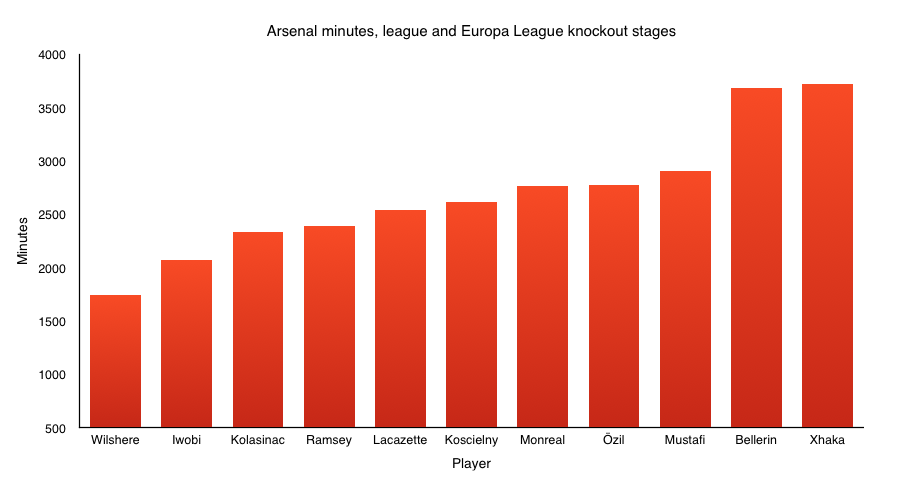Mesut Özil: Beyond the Narrative
This is part one of a three part series on Mesut Ozil by Special Contributor Oscar Wood
It has not been a good few months for Mesut Özil. His 2017/18 season finished disappointingly on a team level, with Arsenal’s elimination at the hands of Atletico Madrid in the Europea League. He then became part of a political storm in Germany when he and Ilkay Gündoğan posed for a photograph with Turkish president Erdoğan. What should’ve been a forgotten matter by the time of the World Cup reared back into focus after Germany’s earliest elimination in 72 years. The lack of support for Özil within the board and the negative press that surrounded the player, which regularly bordered on the extreme and had particularly sinister connotations in relation to the player’s national heritage, cumulated in one of the more shocking international retirements of recent memory. To make matters worse, the Arsenal man has had a particularly poor start to the season, just when supporters are hoping for an uptick in fortunes for the club.
With all the negative attention that has surrounded the German in recent weeks and months, it has been easy to overlook something else. Something that might not be as obvious at the moment, but something that is just as important, if not more so, than anything else currently being said or written about the player. Mesut Özil is still Arsenal’s best player. At the moment, with him taking home a healthy £350,000 a week from the club, and his last top draw performance coming many months ago, people might scorn at the idea Arsenal’s new number ten is worthy of such a billing. But rewind eight or nine months and the narrative surrounding Özil was entirely different. With the negative energy of Arsenal fans predominantly focused on Alexis Sánchez it was easier to see the positive aspects of Özil’s play. The good will was only be helped by the building rumours of a new contract extension that cumulated with his renewal at the beginning of February. The road since has been more rocky. The burden that comes with such a wage hike started to bear heavy almost immediately, and the team overall have had few successes since their star man signed on.
That can make it easy to forget just how important Özil is to Arsenal, and how good his performances were as recently as last season. Indeed, his 2017/18 season has become more underrated with time, thanks to recency bias and a combination of on pitch factors that meant he didn’t get quite the amount of recognition he could’ve done. In the Premier League he put in many of his best performances for the Gunners, was one of the Europa League's standout players in its latter stages, and was a consistent performer whenever he got on the field at the Emirates stadium.
At face value, Özil’s eight Premier League assists represent a mediocre return for someone of his reputation as a creator. However, when it came to creating chances from open play, it was one of Özil’s best ever seasons. The 2.99 key passes per 90 minutes he played from non-set piece situations was the highest figure he’s had in a Premier League season, beating his previous best of 2.80 from 2015/16. One of the criticisms of the key pass stat (some call it chances created, they’re the same thing), and this isn’t without valid reason, is that it doesn’t take into account the quality of the chances created. Any pass that leads to a shot is one key pass, whether it’s a big chance, or a shot from 30 yards. But Özil’s expected assists per 90 figure was 0.38, which was the same figure as Kevin De Bruyne’s, who was widely cited as the league’s outstanding midfielder and creator last term. It was also higher than Özil's own figures in 14/15 and 16/17 figures (there’s no data for his 13/14 season) abut down on his astonishing 0.52 in 15/16. One thing which hurts his overall creative numbers is the fact he took fewer set pieces in 17/18. In 17/18 he averaged 3.2 corner takes and 0.9 free kick takes per 90 minutes. In 15/16 those figures were 4.3 and 1.3 respectively. His 16/17 figures were similar (they were slightly lower before that, Cazorla used to take quite a few). In other words he was taking one and a half fewer set pieces per match last season. Xhaka got three assists directly from corners last season, whereas in 16/17 he got none. Had Özil taken all the extra corners Xhaka took last season, his overall assist tally may have looked better. There isn’t open play only xA data publicly available unfortunately. But a significant reason why Özil’s xA per 90 in 15/16 (0.52) was better than his 17/18 figure (0.38) would’ve been those extra set pieces he took.
Özil’s impact doesn’t just come with the final ball, however. Last season he actually increased his already significant responsibility in Arsenal’s possession play, particularly during the part of the season when the Gunners operated with a back three. That formation left Arsenal with fewer ball playing midfielders, and Özil became a key facilitator for Aaron Ramsey to make his trademark forward runs and support the attack. In the Premier League he completed a career high 65.05 passes per 90 minutes and was one of the league's best when it came to progressing the ball up the pitch. At his peak during the season from October to the end of January, he would regularly start a passing move, keep up with the play, then lay off the final pass to finish the play, like in the clip below against Palace.
In the 2-2 draw against Chelsea, even Gary Neville was impressed by the way he took control of the match and dictated things for Arsenal. In that match he dominated possession in the final third. Özil was playing so many passes in dangerous areas of the pitch that he ended up playing 22 passes to Alexis, a remarkably high figure for a pass combinations between two forwards in a big game, which was bettered only by the 24 passes Xhaka played to Özil.
What didn’t help Özil’s cause is the perception surrounding his absences from the team in 2018. A back injury ended his club season after Arsenal’s Europa League tie with Atletico Madrid and seemed to disrupt his World Cup. Özil isn’t the only player to miss games through injury and illness, but with him there is definitely an impression that, at best, he misses games too easily, and, at worst, has excuses for him entirely fabricated so he can enjoy extra time off. When he misses games there are more tinfoil hat appearances on the Twittersphere than there are for perhaps any other player. We have to ask ourselves whether such attitudes to his absences are really fair. After missing the West Ham game Unai Emery became the third manager in recent years to excuse Özil from a game because of illness. What is more likely; three different managers deciding to give him special treatment, or him simply having a below average immune system?
On face value Özil missed 12 league games, which isn’t great. However the majority of these came from February onwards, when Arsenal’s priorities shifted from domestic competition to their European run. He played every Europa League knockout game bar the Östersunds home tie, and was a standout player in the competition (only in the Atletico away match did he fail to put in a high quality performance). In other words, there were essentially just five games Özil missed that were important to Arsenal’s season. In the Premier League and Europa league knockout stage, the important fixtures in Arsenal's season, Özil played the fourth most minutes for Arsenal, more than the likes of Lacazette, Monreal, Ramsey and Koscielny. Missing sporadic games here and there also looks bad because of the number of different no shows, but when almost all the absences are short the collective damage is minor. Missing three one off games through illness is certainly no worse than missing five weeks with a muscle strain.
Of course, not even Özil’s biggest detractors will argue he’s incapable of doing useful things on a football pitch. The debate has always been about whether the trade offs of giving such a narrowly defined player great responsibility are worth it. Do you gain more than you lose? Özil is best used centrally rather than wide, but he can neither defend like a true midfielder, nor score like a true second striker. These traits make him something that is surprisingly common in the Arsenal squad; a player with a few elite skills who needs a fairly confined role in order to prosper to his full capabilities (I think Aubameyang and Ramsey fall into this category as well, somewhat).
Arsene Wenger clearly felt the positives of building around Özil outweighed the negatives and gave him significant freedom and responsibility to be an on pitch leader for Arsenal. Sometimes it paid off, sometimes it didn’t. Unai Emery has up till now used him in a more periphery role, which has so far failed to produce anything like Özil’s top form. But it has arguably hurt Arsenal’s overall attack as well. As of yet, the Gunners have been able to find consistent fluency without their number ten at the heartbeat of things. After a season of under appreciated heights in 2017/18,
it would be a shame if Özil’s best performances were to become purely a thing of the past under Unai Emery.
Tomorrow we’ll take a look at the beginnings of Özil’s 2018/19 season, and why the German has so far struggled under Unai Emery.
Oscar is on Twitter @Reunewal. Follow him there.





